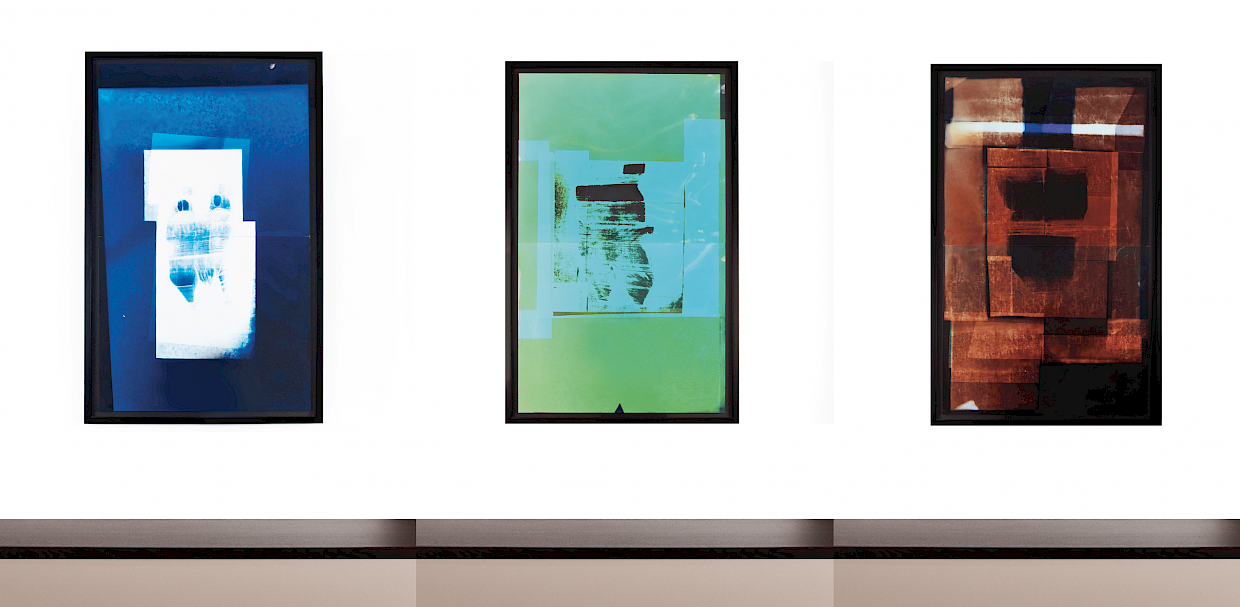

Nathaniel Mellors (b. 1974)
Venus of Truson (Prehistoric, Photogrammic Originals)

The first show Nathaniel Mellors did in the Netherlands was at the Galerie Fons Welters, in the so-called “Playstation”. The gallery’s front porch was used for the experiment and Mellors was given the complete freedom to decorate the space. He created pleasant chaos with ad hoc sculptures, drawings and video. Ad hoc, because the space seemed to change every day and visitors could order stenciled artworks from the artist on site. At the Rijksakademie (State Academy of Fine Arts) in Amsterdam, Mellors stood out with a very impressive graduation presentation with computer-controlled moving heads (animatronics) that produce ominous texts. The show is notable for its technical performance and the alienating atmosphere in the room.
The Venus of Truson triptych stems from a series of unique “photograms”. A “photogram” is a print of an object that has been placed directly on light-sensitive material in a dark room before it is exposed. It’s a form of photography without the use of a camera. Mellors plays with different colours as well as with light and he changes the position of the object, but other than that, we keep seeing the same subject: a small statue depicting Venus.
The title Venus or Truson refers to a character who appears in a film by Mellors: the fictional anthropologist Truson. In the 2010 film Ourhouse, the gullible Truson is convinced that he bought the original Venus of Hohle Fells on the internet, which is the oldest existing prehistoric example of figurative sculptural art. The Venus of Hohle Fells does actually exist and was discovered in 2008 near Baden-Württemberg. The small sculpture is between 35,000 and 40,000 years old and there is much debate about its meaning. The explanations range from topics such as sex and reproduction, to survival and old age. Regardless, as an artist, Mellors is obsessed with early Paleolithic artefacts and has used the figurine (Truson’s reproduction) to create dozens of photograms. As an artistic creator, Mellors turns a reproduction into an original work of art.
These photos can be interpreted as independent works of art, but stand in close relation to the Ourhouse film series. In it, Mellors uses language as a means to tell the viewer a story, but also to mislead them. With fragmented, experimental dialogues, Mellors shows how language can create its own world, but also how it often falls short when it comes to human communication.